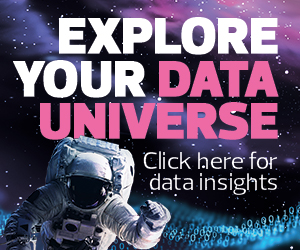In a landscape where every purchase, download and action can generate new data, it’s no surprise that companies increasingly find themselves overwhelmed. Businesses find that they have too much data and no way to leverage that information toward real-time insights.
Take, for example, the implementation of artificial intelligence, machine learning (ML) and automation. These are all technologies that depend largely on the data provided to them, meaning that the outcome depends on the quality of data, explains Michele Goetz, vice president and principal analyst at Forrester Research, who specializes in AI technologies, data management, governance and integration.
“Most organizations are going through a massive modernization of their data platforms,” Goetz says. “Data is everywhere, all over the place. How do you bring it all together?”
For many companies, the answer can be found in modern data platforms, an emerging solution that allows companies to aggregate, clean, store and secure their data in a way that benefits the entire enterprise.



Training AI and ML to Analyze Data in Real Time
Although most people consider data critical to making informed and accurate business decisions, data can also be biased or used out of context, Goetz cautions. “How do you know that the quality and integrity of that information is correct?” she says. “How do you know that it hasn’t been created maliciously to generate bad insights or to obfuscate reality?”
Data and its interpretations can evolve rapidly, based on changing circumstances. A real-world event like the pandemic is an ideal example of this shift. Before COVID-19 shut down businesses around the world in March 2020, online algorithms had been carefully trained based on the available data. “The pandemic broke all of our models,” Goetz says. “We had to rebuild the data to show a stronger representation of online purchasing behavior and engagement.”
DIG DEEPER: Learn how growing businesses are improving their data performance.
Data is everywhere, all over the place. How do you bring it all together?”
Michele Goetz
VP and principal analyst, Forrester Research
This is why effectively implementing and sustainably using automation, AI or machine learning requires constantly categorizing your data so that the insights fed into algorithms evolve in real time with changing human behavior. In other words, it takes human insight to prevent intelligent technology from mimicking traditional human error.
“You need both sides,” Goetz says. “You’re addressing where human error comes in, because the training data you use could have human biases.”
A Platform That Makes Data Accessible for All
Organizations of all types struggle to make data useful across an entire enterprise. Regardless of the industry, this is a problem that grows more complicated as new data streams in.
One of the biggest challenges companies face is how to get data into the hands of people who need it, and how to do so in a way that’s decipherable and conducive to action.
Older data platforms, Goetz says, were only accessible to the most adept technology users. “Older platforms were very bespoke and monolithic, but modern data platforms support a wider range of use cases,” Goetz says. “That’s really their brilliance. If you’re in Microsoft Azure’s data lake environment or Snowflake, the experience feels like you’re just using one database, but you may be spanning multiple data sources.”
READ ON: Find out what kind of data center is right for your organization.
Getty Images: Sergey Khakimullin, angel_nt, traffic_analyzer, liuzishan













